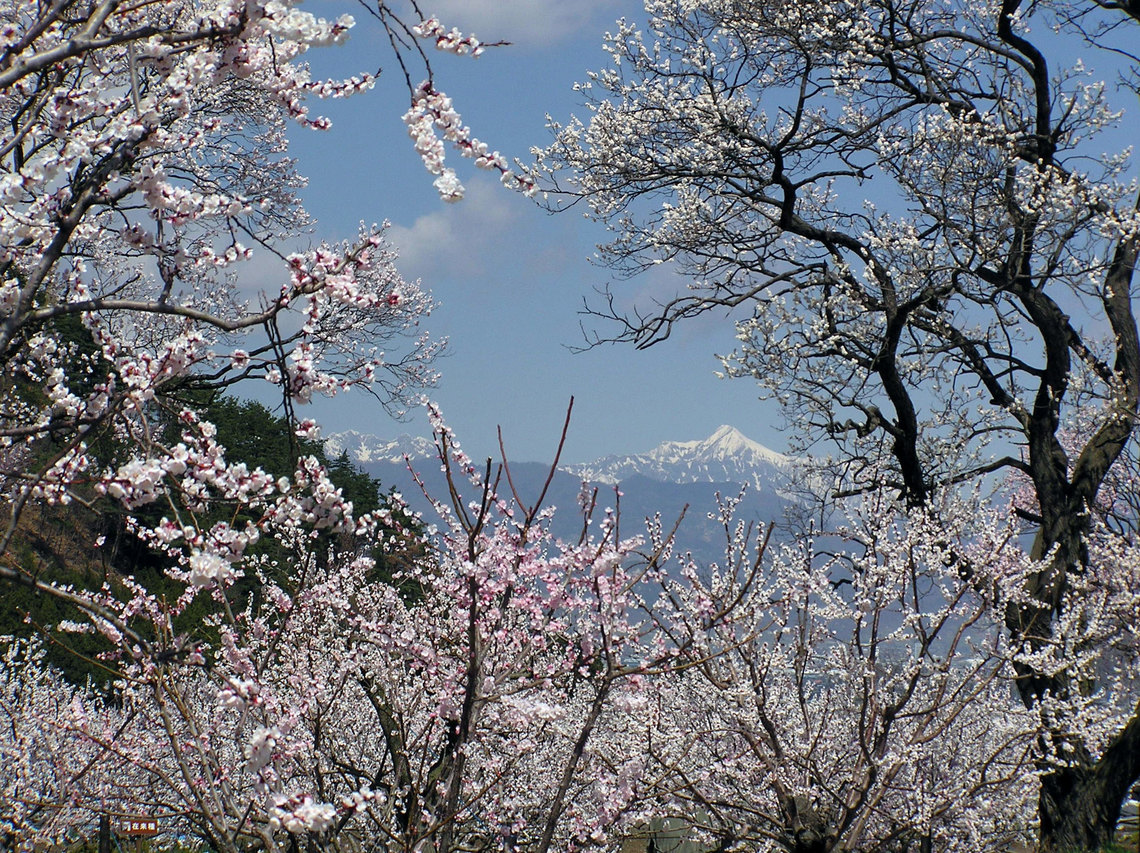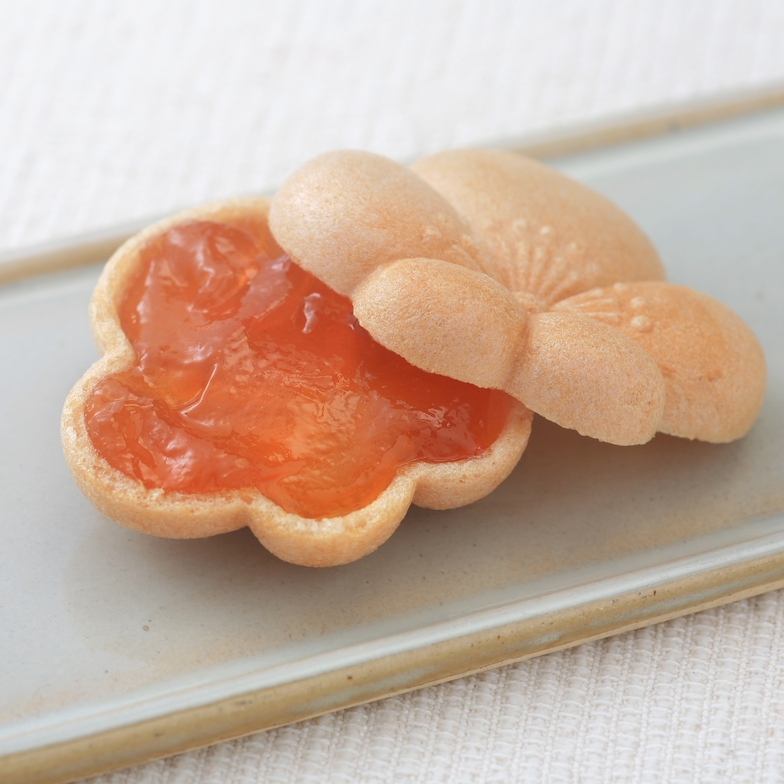My high school didn't have a school trip, but instead held an annual "group training" program. We'd wake up early in the morning and assemble in front of the hotel in just over ten minutes. While roll call was being taken—"Eight members present, eight members accounted for. No abnormalities"—the teachers would check our dorm rooms. It was a rather grueling trip: poor futon folding earned punishment runs, and after meals, we engaged in serious mountain climbing training or backcountry skiing drills. Back then, Nagano felt like a distant place, a long bus ride from Kanagawa. But since the Shinkansen opened, it takes only about two hours to reach Nagano Station from Shiodome, where my company is located. It's truly regrettable that we no longer need to stay overnight.

This day, my day trip took me to Chikuma City, about a 30-minute drive from Nagano Station. The town takes pride in its apricots, which spread from seedlings brought by Toyohime, the daughter of Date Munetosi, lord of the Iyo-Uwajima domain, when she married Sanada Yukimichi, lord of the Matsushiro domain, during the Edo period, as she longed for her homeland. Every April, many tourists visit to see the beautiful scenery, said to be "a hundred thousand trees at a glance."
Shinshu's apricot confectionery specialist, "Kyokado," has long made sweetened beans here but recently shifted to specializing in apricots. While simply called "apricots," they range from native varieties likely close to the princess's original sapling to more recent cultivars. You can enjoy sweets tailored to each fruit's unique characteristics.
The top recommendation for hot summer days is the "Frozen Apricot Monaka." To the untrained eye, it might just look like the year-round " Apricot Monaka " frozen, but it's truly delicious. The idea actually came about when they were developing a summer-limited product. Mr. Maehata, who was in charge of this shop at the online store Yonnana Club, suggested, "Why not just freeze this monaka as is?" There was also a calculation that high-sugar apricot jam wouldn't freeze at sub-zero temperatures. It was brilliant that Anka-do didn't dismiss this idea and actually tried it. Instead of freezing, the apricot jam developed a unique, chewy, sticky texture. It retained the apricot's refreshing quality while offering a slightly mochi-like bite.
This mindset of "just try it first" and "think while you make it" might be surprisingly difficult. I'm currently working with several local producers striving to break through their current situations by creating new "concepts." But whenever they start thinking about words, they tend to get stuck seriously poring over their desks. For example, if someone comes up with a concept candidate like "Ocean Smoothie" or "Farmer's Roast Beef," instead of agonizing over it, they should just follow the direction it suggests and try making it in the kitchen. Yet, they seem to struggle with taking on such challenges.
As I' ve mentioned in this column before, one innovation methodology, "design thinking," encourages creating prototypes quickly—even if they're rough—and engaging in "hands-on thinking" while building them. In practice, giving things physical form sparks discoveries and reflections that transcend logical right or wrong. Building on that, as you iterate and refine prototypes, the "concept" itself grows and evolves.
By nature, smaller local businesses should have much closer access to their "production sites" compared to large corporations. There's no reason not to leverage this. For a large company, mobilizing the organization to turn a concept into a prototype involves various time-consuming steps like surveys and such. I believe local players have a real chance to win precisely because they can break through this quickly.

Everyone at Kyokado
Since Nagano is a day trip, I look forward to wandering local izakayas until the very last train. At the place I found that day, the croquettes were absolutely delicious. Cracking the firm crust revealed a filling that practically overflowed—but it wasn't creamy. Maybe they stretched the potatoes with dashi? Nah, my tongue was too dull from the cold local sake "Tsuruyoku" to tell. But damn, it was good. That's right, times like this are when you should just "give it a try" and "figure it out as you go"... or so I thought while tipsy, nearly missing the last train. Close call, close call.
Now, starting the day this column is published, I'll be taking my summer vacation in the Akimoto settlement, deep in the mountains beyond Takachiho Gorge in Miyazaki Prefecture. I'll share stories from there next time, probably.
Please, enjoy!





